Graphical Representation of Motion Class 7, Motion and Time, Science

KS3 Physics Forces and Motion DistanceTime Graphs Teaching Resources
Use your measurements of time and the displacement to make a position vs. time graph of the ball's motion. Repeat Steps 4 through 6, with different people taking on the roles of experimenter, timer, and recorder.. The slope of a distance versus time graph is velocity. This is shown at two points. Instantaneous velocity at any point is the.
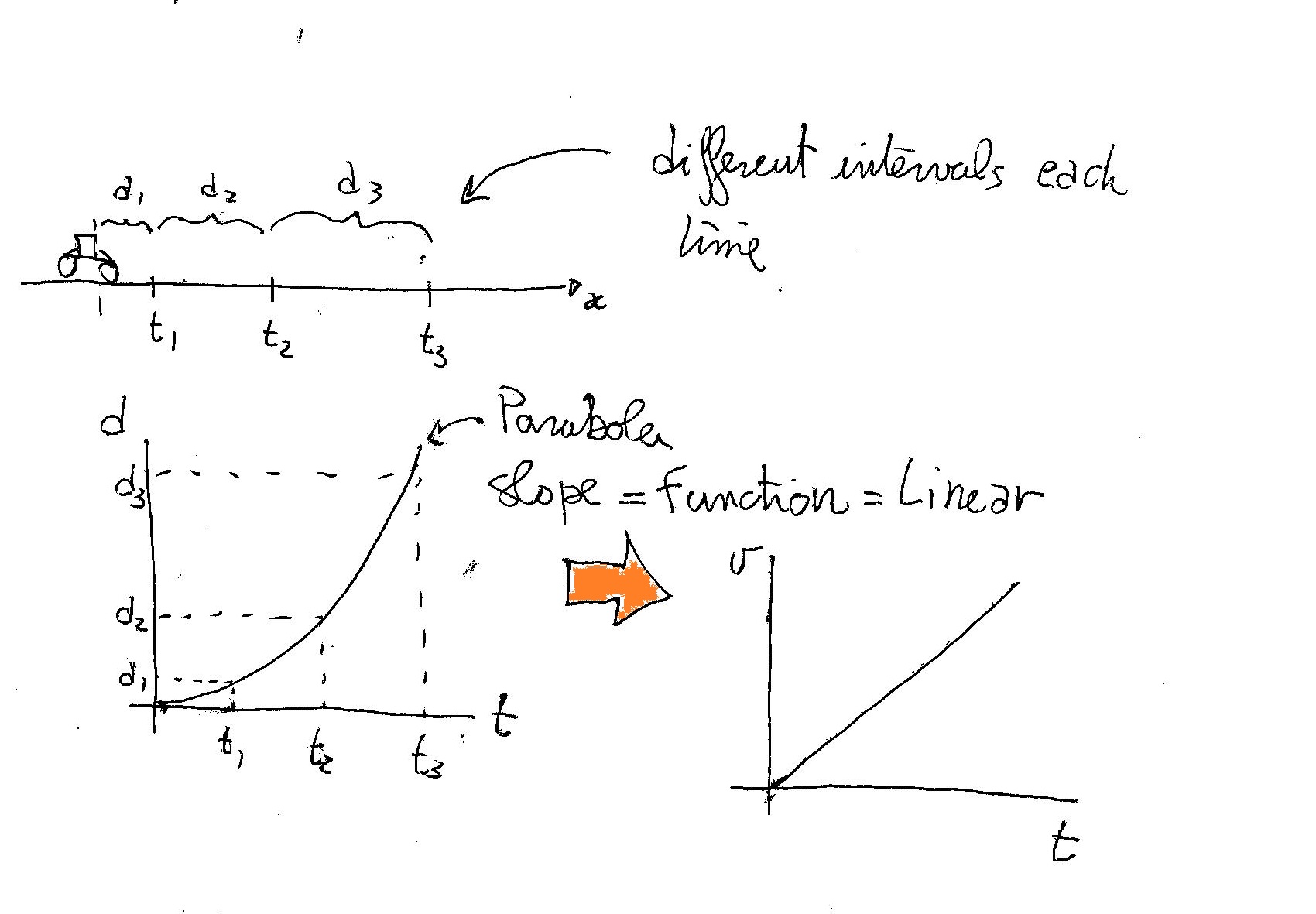
What is how does a motion graph of distance vs time differ from a graph of speed vs time? Socratic
Motion Graphs - Distance vs Time Keipert Labs 6.43K subscribers Subscribe 302 views 6 years ago Moving In this episode of Keipert Labs, we'll go over how we can use graphs to describe the.
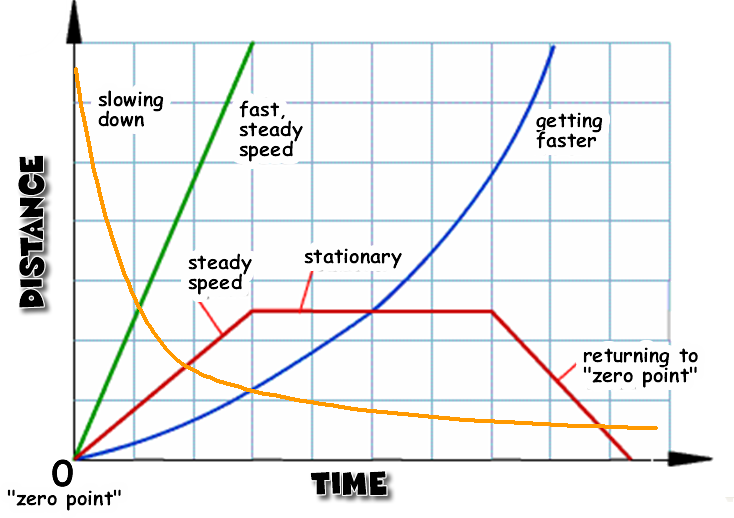
ICCSE Edexcel Physic Help 1.2 plot and interpret distancetime graph
What is displacement? Calculating average velocity or speed Solving for time Displacement from time and velocity example Instantaneous speed and velocity What is velocity? Position vs. time graphs What are position vs. time graphs? Average velocity and average speed from graphs Instantaneous velocity and instantaneous speed from graphs Science >

Two students were asked to plot a distancetime graph for the motion described by Table A and
On a distance-time graph a diagonal straight line means CONSTANT SPEED. (This will be different on the speed time graph.) On a distance-time graph a curved upwards line means ACCELERATION and a line that returns down to the baseline means RETURNING BACK to the original starting point (0 line on the graph). Again, different on the speed time.
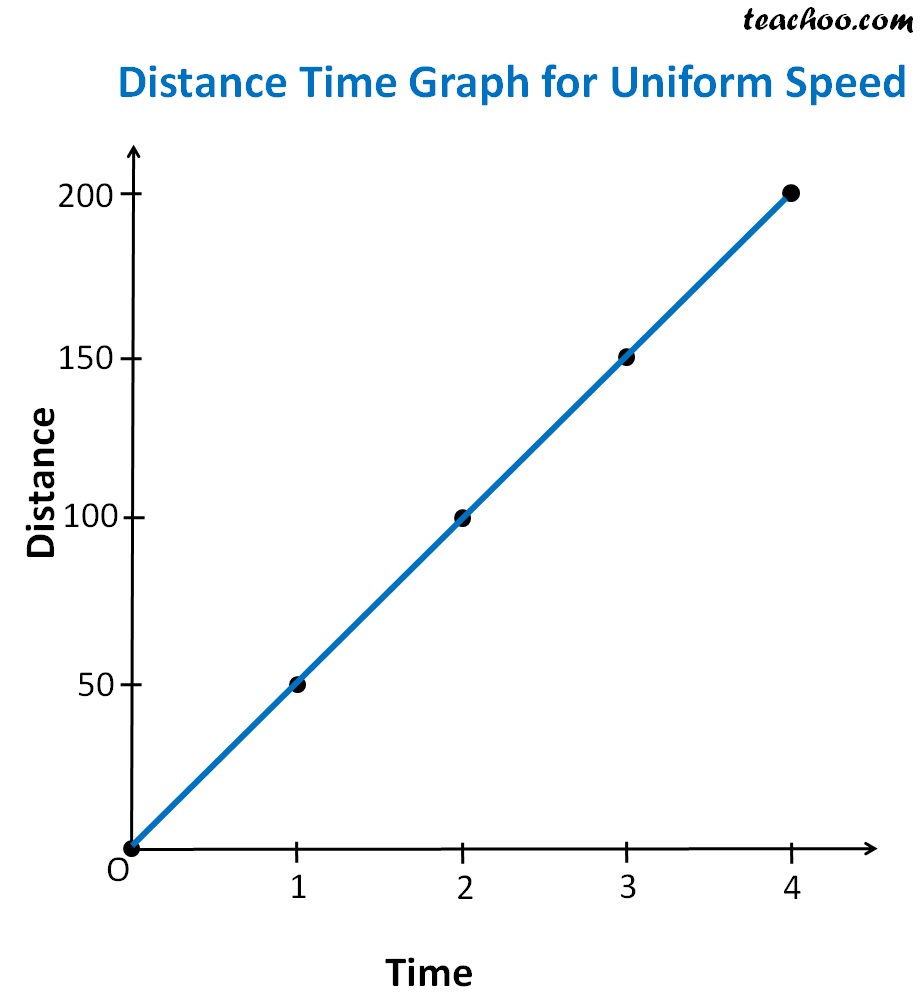
Distance Time Graph for Uniform and NonUniform Motion Teachoo
Answers. Download this page, PMO1.2 Linear motion: Graphs (PDF 1480KB) Linear motion refers to the motion of an object in a straight line. Describing these motions require some technical terms such as displacement, distance, velocity, speed and acceleration.

Velocity Time Graph Meaning of Shapes Teachoo Concepts
Select the correct answer and click on the "Finish" button Check your score and answers at the end of the quiz Start Quiz Read about distance time graph and velocity time graph. Learn the concepts of motion graphs for uniformly accelerated motion and more by registering with BYJU'S
Distance Time Graphs
Constant acceleration motion can be represented in motion graphs which represent velocity, acceleration, and distance as functions of time. These graphs are useful for calculating information about motion using the slopes of the curves in each plot.

Distance Time Graph for Uniform and NonUniform Motion Teachoo
What can we learn about motion by looking at velocity vs. time graphs? Let's return to our drive to school, and look at a graph of position versus time as shown in Figure 2.15. Figure 2.15 A graph of position versus time for the drive to and from school is shown.
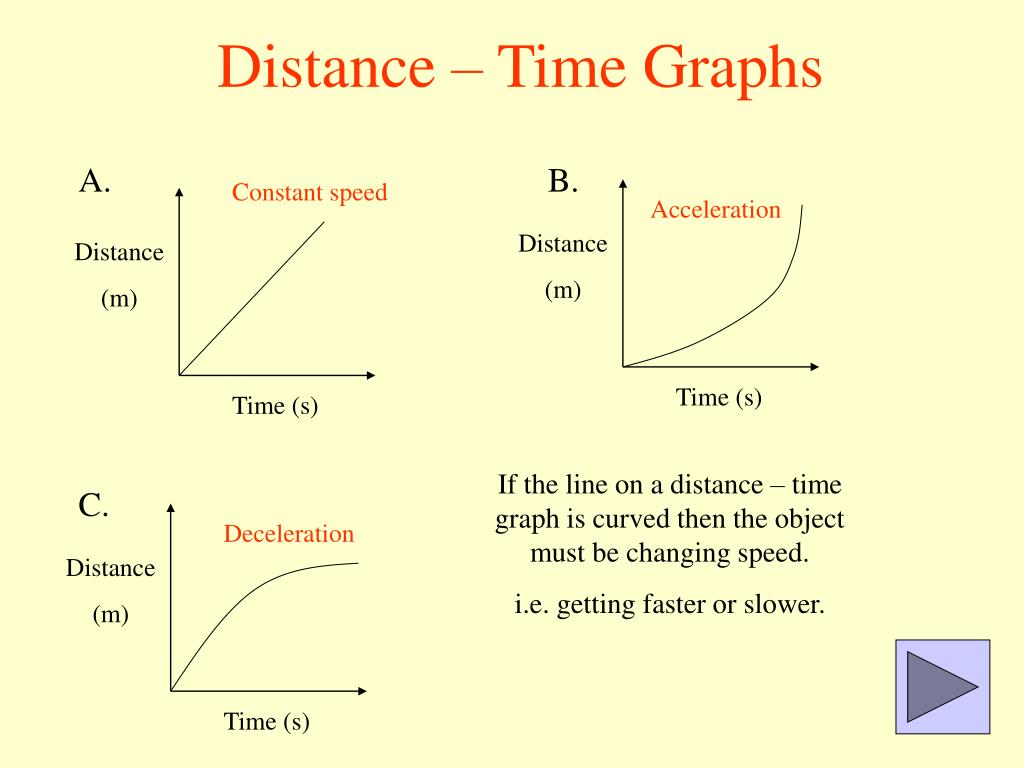
PPT Motion PowerPoint Presentation, free download ID4816796
The two graphs are connected because the speed vs time is a graph of the slopes obtained from the distance vs time graph: For example: 1) consider a particle moving with constant speed: The distance vs time graph is a linear function while the speed vs time is a constant; 2) consider a particle moving with varying speed (constant acceleration):.

MEDIAN Don Steward mathematics teaching distance/time graphs and average speed
The slope of a velocity graph represents the acceleration of the object. So, the value of the slope at a particular time represents the acceleration of the object at that instant. The slope of a velocity graph will be given by the following formula: slope = rise run = v 2 − v 1 t 2 − t 1 = Δ v Δ t v ( m / s) t ( s) r i s e r u n t 1 t 2 v 1 v 2

MOTION 06 DISTANCETIME GRAPH GRAPHICAL REPRESENTATION OF MOTION CLASS 9 ONLINE PHYSICS
It is a simple line graph that denotes distance versus time findings on the graph. Distance is plotted on the Y-axis. Time is plotted on the X-axis. Note: Curved lines on a distance-time graph indicate that the speed is changing. You may also want to check out these topics given below! Graphs Velocity-Time Graph Linear Graph
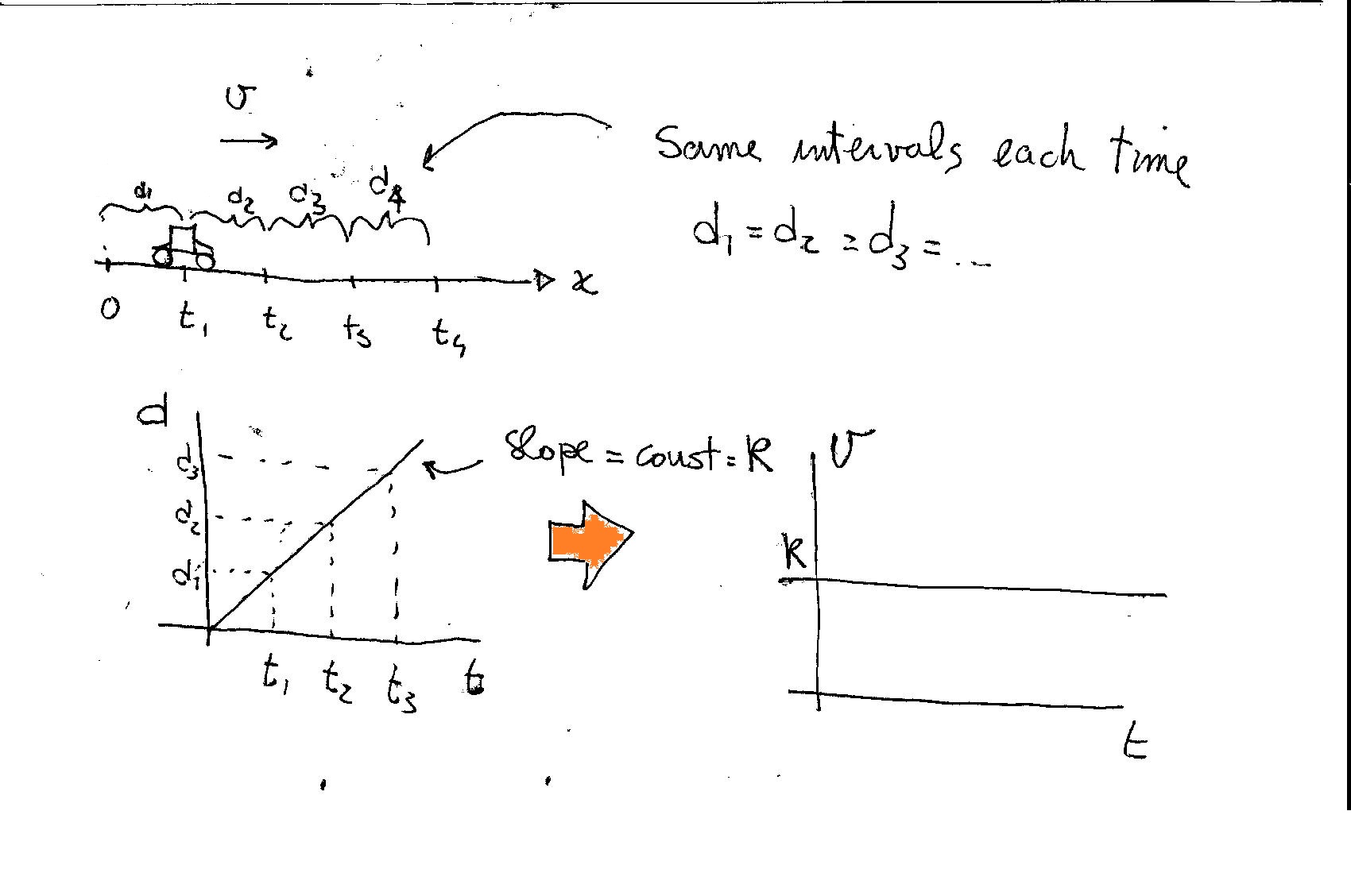
What is how does a motion graph of distance vs time differ from a graph of speed vs time? Socratic
What are position vs. time graphs? Google Classroom See what we can learn from graphs that relate position and time. How are position vs. time graphs useful? Many people feel about graphs the same way they do about going to the dentist: a vague sense of anxiety and a strong desire for the experience to be over with as quickly as possible.

DistanceTime Graphs
There are three types of motion graphs that you will come across in the average high school physics course - position vs time graphs, velocity vs time graphs, and acceleration vs time graphs. An example of each one can be seen below. The position vs time graph (on the left) shows how far away something is relative to an observer.

PPT Motion graphs Distance/time PowerPoint Presentation, free download ID9492852
Motion Graphs: interpreting distance vs time graphs adventures in ISTEM 2.41K subscribers Subscribe 1K views 2 years ago physical science videos Understand how different motions are.
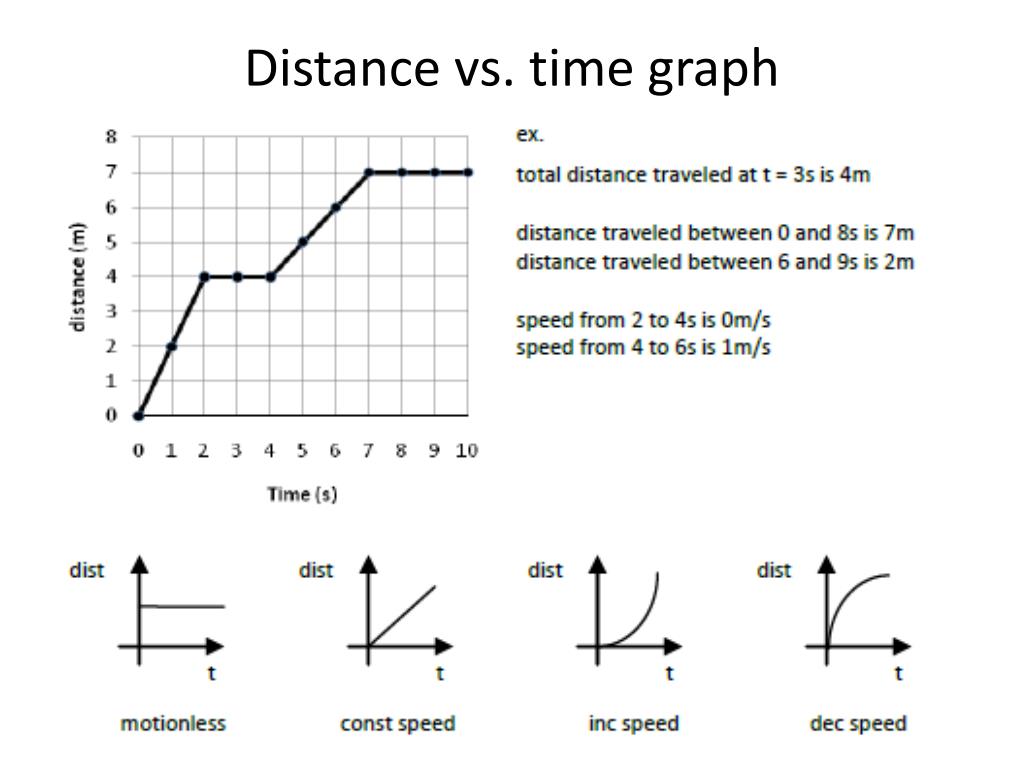
PPT Motion in one dimension PowerPoint Presentation, free download ID2463862
Activity 1: Making distance vs. time graphs for different walking speeds and directions Start at the 1⁄2 meter mark and make a distance versus time graph, walking away from the sensor slowly and steadily (at constant speed). Sketch your graph on the axes to the right.
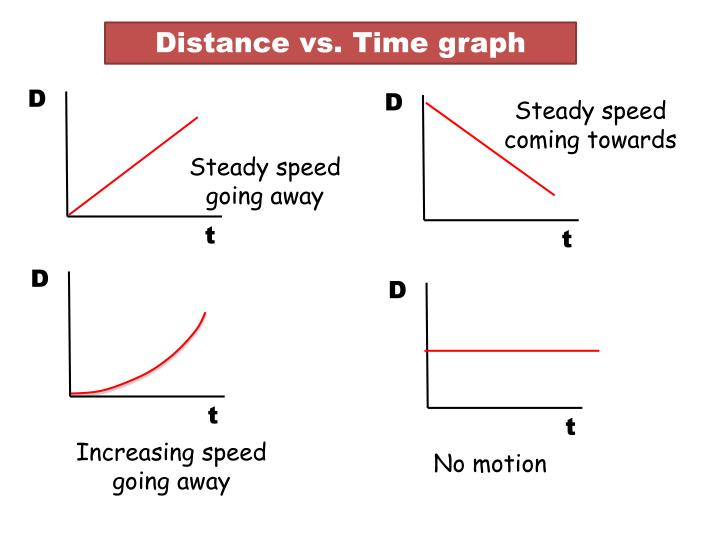
PPT Motion PowerPoint Presentation ID6301506
Motion graphs, also known as kinematic curves, are a common way to diagram the motion of objects in physics. The three graphs of motion a high school physics student needs to know are: Position vs. time graph (x vs. t) Velocity vs. time graph (v vs. t) Acceleration vs. time graph (a vs. t)